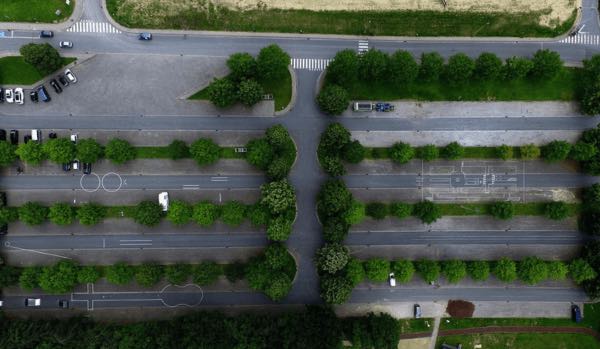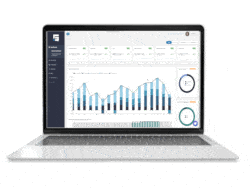Common area maintenance (CAM) can be an intimidating part of running a commercial real estate business, but it is crucial to master. Below, let’s break down everything you need to know to be successful with CAM.
What Is Common Area Maintenance?
When more than one person rents office space in a business building, they usually have access to two types of space. First, they can use the areas that they rent, like their suite. Second, there are areas that all the tenants of the building use. These are the property’s common areas.
Common areas can be different from building to building, but they usually include hallways, lobbies, and parking lots. They may sometimes also have exercise centers and meeting rooms. In some cases, the costs maintaining of shared areas are divided among all tenants, resulting in common area maintenance (CAM) fees.
As a commercial property owner, it’s essential to understand all the expenses you’re responsible for tracking with Common Area Maintenance (CAM) fees. CAM fees are charges paid by tenants, which cover the maintenance and upkeep of common areas within the building.
Terms Related to Common Area Maintenance
Common area maintenance is known by a large range of terms, including:
- Additional rent
- Operating expenses
- Triple net charges
- Building operating costs
- Common charges
- Shared expenses
Regardless, all these terms refer to the costs that all tenants must help cover in order to keep the property functional and presentable.
What Does Common Area Maintenance Cover?
CAM fees typically cover expenses related to the maintenance, operation, and repair of all the common areas. Common expenses associated with CAM include janitorial services, snow removal, landscaping, pest control, fire and life safety systems, security systems, and more. Specific details of which expenses are covered by CAM vary by the property and building management.
CAM that includes community areas makes sure that all tenants help keep these shared facilities in good shape. Understanding the scope of CAM and how it includes common areas is important for commercial retail managers. This way, they can keep property costs low and make sure the business environment stays appealing and useful.
It is essential to read lease agreements thoroughly to understand all the costs associated with running a commercial property.
How Are Common Area Maintenance Fees Calculated?
There are two primary types of CAM fee calculations: fixed or variable. In a fixed CAM fee calculation, the tenant pays a flat rate of CAM charges per month. With a variable CAM fee calculation, the tenant pays for their share of the CAM charges based on the proportion of space they lease. This is also known as pro-rata share.
The landlord usually calculates this by dividing the total maintenance costs among tenants based on each unit’s square footage compared to the building’s total leasable space. For example, if a tenant is leasing 1,000 square feet of a 10,000 square foot building, the CAM amount would be 10%. Thus, the tenant would be responsible for 10% of the CAM expenses.
Negotiating CAM Fees
There is always room for negotiation when it comes to CAM expenses. Both landlords and tenants should be willing to discuss to arrive at a fair agreement. To negotiate on CAM fees, tenants can approach landlords or property managers with practical alternatives. One such alternative is a reduced CAM fee for an extended lease slightly below the market rate.
Landlords may agree to an extended lease period in exchange for a lower CAM fee. Tenants can also include CAM fee caps in the lease negotiation to prevent exponential expense increases. Before negotiating, tenants should evaluate their lease contract carefully to understand whether the CAM expenses are capped or not.
CAM expenses should be calculated correctly. To be certain that your CAM calculations are correct every time, consider using a property management software like STRATAFOLIO. These programs save you significant time and prevent mistakes that could lead to disputes.
Common Area Maintenance Reconciliation
Throughout the year, tenants pay monthly fees to cover CAM. However, these monthly fees are an estimation: they represent what you as the owner expect to pay to maintain the property. Because maintenance costs shift and because unexpected issues may arise, CAM fees must be reconciled each year.
Reconciliation compares what tenants paid to what maintenance actually cost. After reconciling, tenants may owe additional money to make up the difference, or owners may need to compensate tenants for paying more than needed.
It is essential to reconcile carefully to avoid over or undercharging, and to provide tenants with a detailed breakdown of fees. This way, there are no disagreements and no one pays more than necessary. Additionally, you should review CAM fees regularly in order to make more accurate estimates and to make budget adjustments.
The Bottom Line
As a commercial property owner or landlord, understanding everything about Common Area Maintenance fees and what it covers can help you stay informed and protect you from unwanted legal disputes. Common Area Maintenance fees are crucial for maintaining the overall aesthetic appeal of any commercial property. Finally, they help ensure maintenance is up-to-date, preventing issues from building up and causing more expensive issues down the road. By understanding the ins-and-outs of CAM fees, commercial property owners can keep their properties in excellent shape with fewer headaches.
Manage Your CAM with STRATAFOLIO
STRATAFOLIO helps commercial real estate companies speed up the CAM reconciliation process by making their tools and workflows work better. CAM reconciliation is notorious for taking owners weeks, if not months, to complete at the beginning of each year. Did you know that with STRATAFOLIO, you can complete CAM reconciliation in one click? Contact us for a demo and ask us about our easy CAM process.




